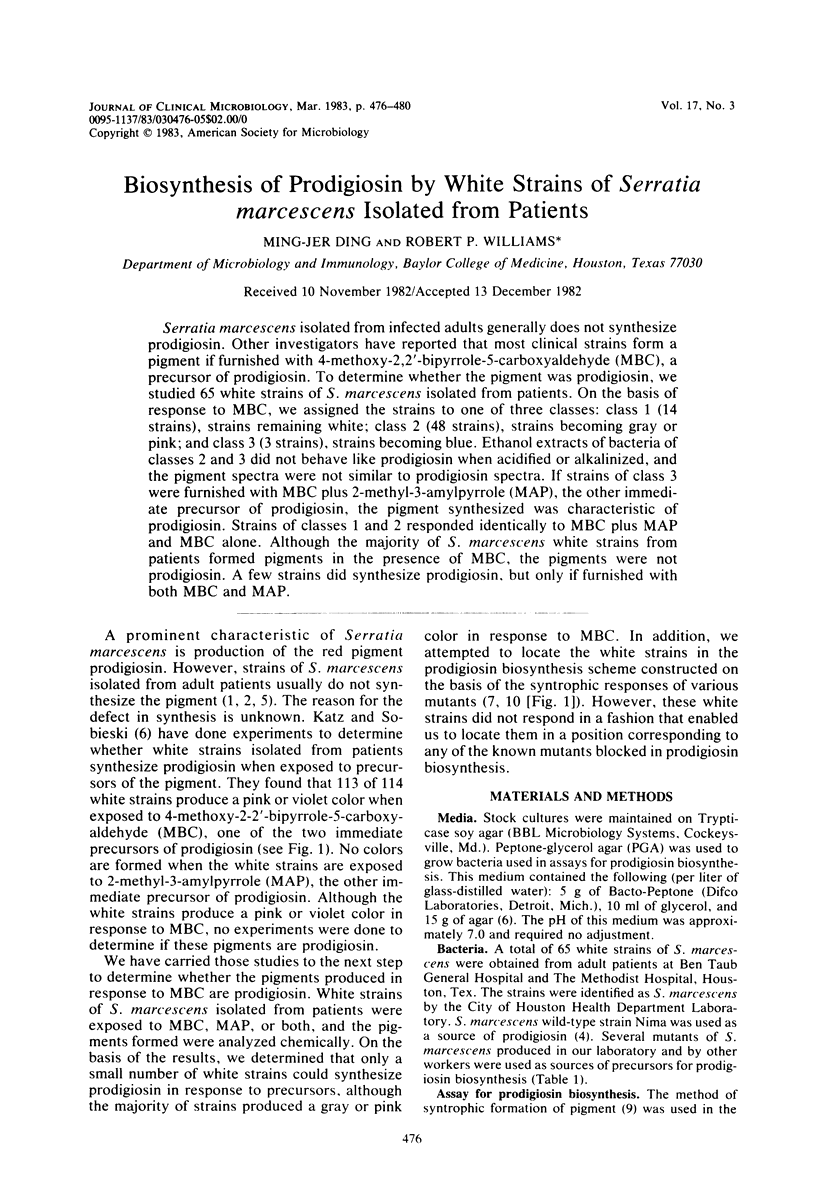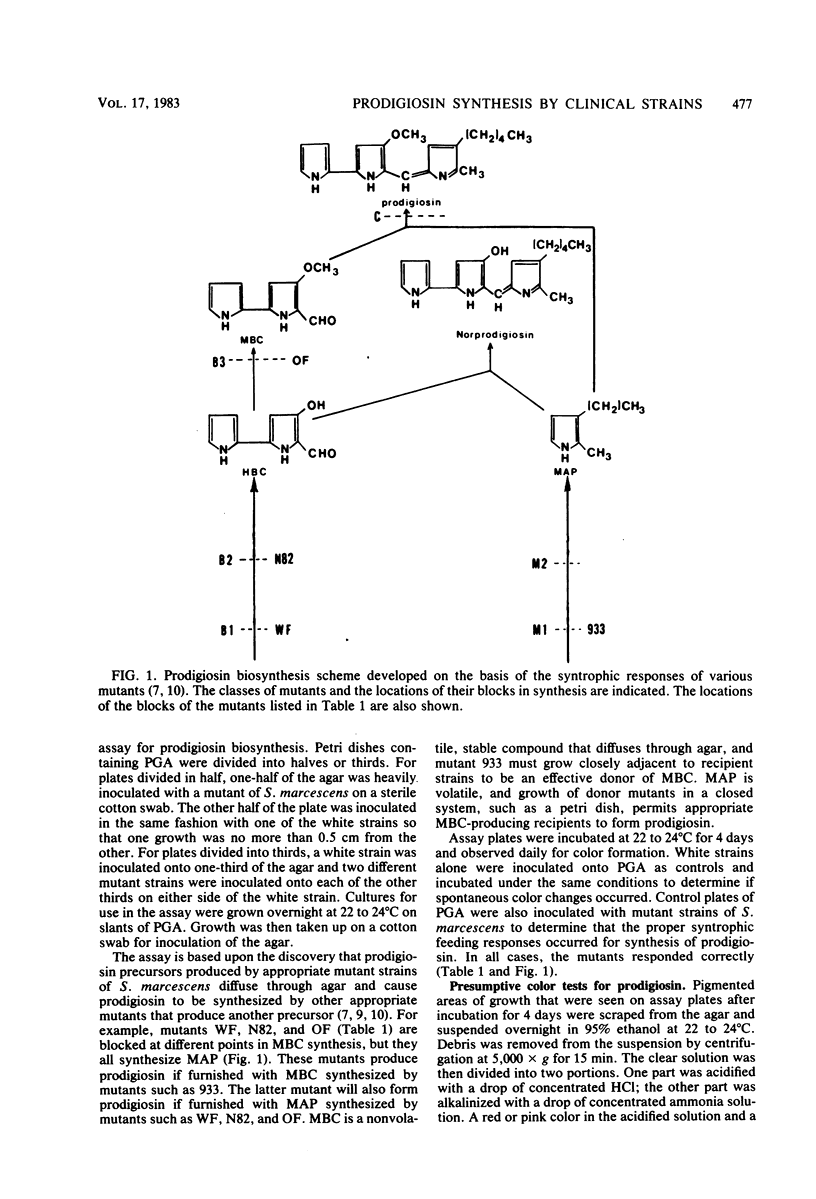Abstract
Serratia marcescens isolated from infected adults generally does not synthesize prodigiosin. Other investigators have reported that most clinical strains form a pigment if furnished with 4-methoxy-2,2'-bipyrrole-5-carboxyaldehyde (MBC), a precursor of prodigiosin. To determine whether the pigment was prodigiosin, we studied 65 white strains of S. marcescens isolated from patients. On the basis of response to MBC, we assigned the strains to one of three classes: class 1 (14 strains), strains remaining white; class 2 (48 strains), strains becoming gray or pink; and class 3 (3 strains), strains becoming blue. Ethanol extracts of bacteria of classes 2 and 3 did not behave like prodigiosin when acidified or alkalinized, and the pigment spectra were not similar to prodigiosin spectra. If strains of class 3 were furnished with MBC plus 2-methyl-3-amylpyrrole (MAP), the other immediate precursor of prodigiosin, the pigment synthesized was characteristic of prodigiosin. Strains of classes 1 and 2 responded identically to MBC plus MAP and MBC alone. Although the majority of S. marcescens white strains from patients formed pigments in the presence of MBC, the pigments were not prodigiosin. A few strains did synthesize prodigiosin, but only if furnished with both MBC and MAP.
Full text
PDF




Selected References
These references are in PubMed. This may not be the complete list of references from this article.
- Ball A. P., McGhie D., Geddes A. M. Serratia marcescens in a general hospital. Q J Med. 1977 Jan;46(181):63–71. [PubMed] [Google Scholar]
- GREEN J. A., WILLIAMS R. P. Studies on pigmentation of Serratia marcescens. IV. Analysis of syntrophic pigment. J Bacteriol. 1957 Nov;74(5):633–636. doi: 10.1128/jb.74.5.633-636.1957. [DOI] [PMC free article] [PubMed] [Google Scholar]
- GREEN J. A., WILLIAMS R. P. Studies on pigmentation of serratia marcescens. III. The characteristics of an orange variant. J Bacteriol. 1956 Oct;72(4):537–542. doi: 10.1128/jb.72.4.537-542.1956. [DOI] [PMC free article] [PubMed] [Google Scholar]
- Gerber N. N., Lechevalier M. P. Prodiginine (prodigiosin-like) pigments from Streptomyces and other aerobic Actinomycetes. Can J Microbiol. 1976 May;22(5):658–667. doi: 10.1139/m76-097. [DOI] [PubMed] [Google Scholar]
- Grimont P. A., Grimont F. Biotyping of Serratia marcescens and its use in epidemiological studies. J Clin Microbiol. 1978 Jul;8(1):73–83. doi: 10.1128/jcm.8.1.73-83.1978. [DOI] [PMC free article] [PubMed] [Google Scholar]
- Katz D. S., Sobieski R. J. Detection of pigment precursors in white clinical strains of Serratia marcescens. J Clin Microbiol. 1979 Feb;9(2):301–303. doi: 10.1128/jcm.9.2.301-303.1979. [DOI] [PMC free article] [PubMed] [Google Scholar]
- Morrison D. A. Prodigiosin synthesis in mutants of Serratia marcesens. J Bacteriol. 1966 Apr;91(4):1599–1604. doi: 10.1128/jb.91.4.1599-1604.1966. [DOI] [PMC free article] [PubMed] [Google Scholar]
- SANTER U. V., VOGEL H. J. Prodigiosin synthesis in Serratia marcescens: isolation of a pyrrole-containing precursor. Biochim Biophys Acta. 1956 Mar;19(3):578–579. doi: 10.1016/0006-3002(56)90500-5. [DOI] [PubMed] [Google Scholar]


